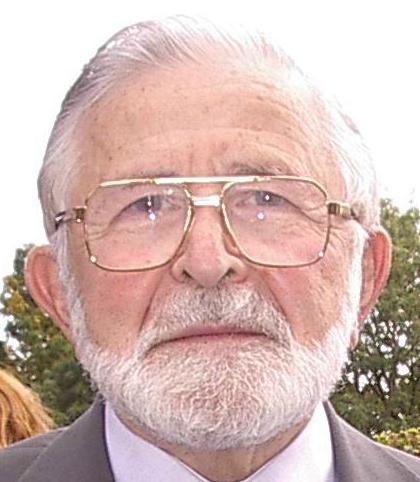By pure chance I came across this obituary in the RCS (Royal College of Surgeons) website.
The old C&BG club produced some lovely men, Paul Abbey was just one of them.
Biographical entry
Abbey, Paul (1920 - 2008)
FRCS 1953; MB BS London 1944; DLO 1958.
Born 6 January 1920
London, UK
Died10 September 2008
Occupation ENT surgeon
Details
Paul Abbey was a consultant ENT surgeon in the Windsor area. He was born on 6 January 1920 in Stoke Newington, London, the son of M Abbey, who had arrived in the UK in 1911 from Lodz in Poland. He was the youngest of four children – there were two older brothers and one older sister. The family lived in a two-bedroom flat until Paul was about 4½ years old, when they moved to Bethnal Green into rooms above a small factory in a converted pub. He attended primary school in Teesdale Street, where he was bullied, and in the evenings he went to Hebrew classes at the same school. At the age of 11, Paul started at the Central School, where his form teacher, Mr Jones, decided that he should try for a scholarship to Parmiter’s, the local grammar school, which was a successful move. Paul’s barmitzvah took place at Teesdale Street Synagogue when he was 13. He was an active member of the Jewish Boys Club and the Cambridge and Bethnal Green Club, taking part in swimming and gymnastics, as well as summer camps near Herne Bay. In the senior years at school Paul became a prefect, and became the school’s most successful sportsman, excelling at gymnastics, swimming and football. When Paul was 15, he bought himself a racing bicycle from James Goose in Holborn, which he paid off at 2/6 per week. He and his brother Manny would take off on camping holidays by bike, once as far as the Isle of Wight.
In 1939, he passed his Senior County exams and was accepted as a student at Westminster Hospital. When war was declared, the Westminster was evacuated to Glasgow, but a friend told him about a vacancy at the London Hospital which was evacuating its medical college to Cambridge. He applied and started in October 1939.
Paul qualified in 1944 and then became receiving room officer, house surgeon to A M A Moore and the gynaecological firm, and then house physician to A E Clarke-Kennedy. He joined the RAF medical service in February 1945 and was posted to India, where he spent two enjoyable years, rising to squadron leader. He made friends with the RAF transport pilots. He would wander out to the airfield and see whether a DC-3 was due to take off. “Hi doc”, the pilots would yell from the cockpit. “Just off to Jaipur. Want to come along for the ride? Hop on, old chap, we’ll list you as additional freight.” He eventually learnt to fly himself in Tiger Moth planes and kept his linen flying helmet and goggles as souvenirs.
On demobilisation, he returned to the London Hospital for three years, at first as a supernumerary registrar to Clive Butler in the septic ward, where penicillin was effecting a radical change in the management of osteomyelitis. He then moved to the King George Hospital in Ilford, initially as a house surgeon for six months, followed by three years as a surgical registrar, during which time he passed the FRCS.
In December 1954, Paul decided to specialise in ENT. He started work at the Royal National Throat, Nose and Ear Hospital, where he became a senior registrar and then moved to a similar post at St Mary’s Hospital in Paddington. In May 1961, Paul obtained his first ENT consultant appointment at Southampton General Hospital. Two years later he applied successfully for a more advantageous ENT consultant post with the Windsor group of hospitals, where he spent the rest of his career.
When he arrived in the area, Wexham Park Hospital was being built, and Paul had a large hand in the design of the ENT department. A firm believer in the original values and mission of the NHS, he disapproved of the many bureaucratic reorganisations that began in the 1970s.
He published numerous articles, delivered lectures and belonged to many committees and councils, including the ENT section of the Royal Society of Medicine and the British Association of Otolaryngologists. He was particularly proud of designing a new surgical instrument which bears his name. In 1985 he retired from the NHS, but continued in private practice for several more years and became a surgical member of the Medical Appeals Tribunal for Industrial Injuries.
Outside medicine, Paul’s great love was sailing. In the days before mobile phones, it was the ultimate escape from the stress of hospital life – out on the water he was completely unreachable. For many years he had an Enterprise dinghy and would tow this boat down to Cornwall every year for family holidays. Later, he teamed up with two friends to purchase the St Brigid, a 32-foot sailing cruiser which they moored down at Lymington on the south coast. Paul spent a lot of his spare time on St Brigid, including two weeks sailing in the English Channel every summer. He studied for his yachtmaster’s qualification, joined the Royal Lymington Yacht Club and even bought a house in Lymington. The whole family was involved in Paul’s sailing. Paul married Joan née Singer in March 1952. Jocelyn was born in April 1956 and Bryony came along four years later, in May 1960. Joan took navigation courses and their two children were co-opted as deck hands during school holidays.
Paul was a great wine enthusiast, and he and Joan travelled extensively around Europe, and visited Australia, the USA and South Africa. Above all, Paul loved being with other people – he liked having an audience, he was great company and always entertaining. This world will be a duller place without him.
Tuesday, 5 April 2011
Subscribe to:
Posts (Atom)
